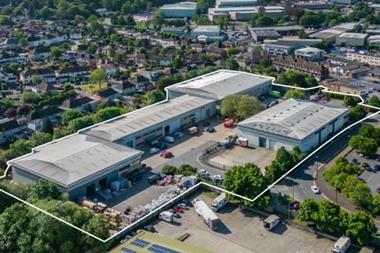Increased demand for space across sectors, from residential to industrial and logistics (I&L), is putting pressure on developers.

With competition for space at an all-time high, industries need to find a way to work together. Potter Space’s recent research, conducted in collaboration with Savills, demonstrates that working together across sectors and with government and local authorities could help to alleviate the pressures for I&L developers while continuing to provide the jobs and housing necessary for communities to grow.
Potter Space’s BIG Things in SMALL Boxes report, which focuses on the sub-100,000 sq ft warehousing market known as small- to mid-box, has revealed that the supply of land currently available for commercial development simply is not enough to meet demand. This means that businesses struggle to find the space they need to expand into so must “make do” with their current facilities – an issue referred to as suppressed demand.
Suppressed demand for land sits at 38% across England, climbing to 51% across Nottinghamshire and Derbyshire, and 57% in Birmingham. It reaches 166% in areas such as Crawley in West Sussex. It is vital that this situation is looked at carefully, as a continued lack of land could stifle business growth and job creation across England.
Tackling issues such as suppressed demand is just one of the ways that developers can help to facilitate growth, especially in areas where businesses are keen to expand their operations. However, there are several barriers obstructing the path to successfully tackling suppressed demand, including a long planning process and the prioritisation of much-needed residential developments.
A continued lack of land could stifle business growth and job creation across England
Local authorities are under intense amounts of pressure to meet planning application deadlines to alleviate the ongoing housing crisis. However, commercial developments also have an important role to play, providing new residents with places to work. Logistics infrastructure is also vital to support deliveries and the provision of goods and services.
Co-location, or site-sharing, could be a viable solution for future I&L developments that will assist with easing the planning process. It will require collaboration between small- to mid-box developers and big-box developers. Big-box sites could offer unutilised land unsuited to large warehouses to smaller developers, sharing not only the already approved location but also amenities, which could reduce the red tape around planning applications.
Small- to mid-box facilities are key to providing a workable solution and creating a balanced environment for people to work and live in. Suited to irregular sites or areas close to residential developments, beside motorway junctions or railway tracks, these warehouses are adaptable and agile to the needs of their tenants, offering a variety of roles and job types. This is compounded by the research, which shows a 16% rise in office spaces being incorporated into new warehouse buildings in England since 2020.
The sub-100,000 sq ft market is home to some of the most diverse use of space within the I&L industry, with a reported increase in research and development activity, including technological research. From manufacturing and warehousing operations, newly incorporated offices through to supporting innovation within the SME sector, small- to mid-box developments are crucial to the country’s economic wellbeing. It therefore makes sense to collaborate with the housing industry and planners to ensure the creation of balanced and successful communities.
Furthermore, the industry has come a long way in showing that I&L property is no longer dirty, loud or energy inefficient. Employee welfare and net zero initiatives are standout agenda items within the sector, with the industry additionally focused on attracting newer generations as they enter the workforce. Small- to mid-box property providers have a major role to play in this area of employment, with data showing that around 31% of apprentices within the I&L industry (or 13,000) begin their careers in SMEs – typically situated within sub-100,000 sq ft warehouses. If suppressed demand was adequately addressed, this figure could quickly increase to 18,000 per year, contributing to meaningful careers for many more apprentices and working to close the national skills gap.
Ideally, developers across the I&L and residential sectors would work with local planners to consider co-location. With so much to be gained, developers, leaders within the I&L sector, government and local authorities should take a positive approach to planning to unlock economic benefits and create a balanced environment with enough jobs to support new residents. By collaborating with developers across industries and working harmoniously together, there is an opportunity to provide housing and jobs and to unlock an estimated loss of £480m in gross value added per year.
Rob Barker is property director at Potter Space
































No comments yet